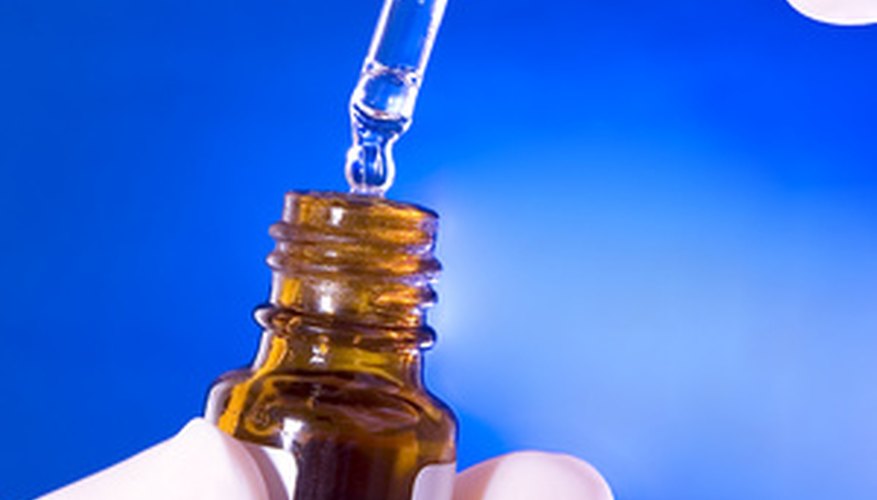Analysis of inorganic compounds requires separate tests to identify the two constituents of the substance. For potassium bromide, potassium--the metal cation--can be identified using flame tests, and the anion bromide can be analysed using chemical reagents.
Testing for Bromide with Silver Nitrate
The silver nitrate test is used to identify halide ions, including bromide, and can only be carried out on solutions, so the substance to be tested must first be dissolved. The solution is acidified using dilute nitric acid; then silver nitrate solution is added. The appearance of a pale cream-coloured precipitate indicates bromide is present.
Confirmation Using Ammonia
It can be difficult to distinguish between the precipitates produced by the silver nitrate test. Silver chloride is white, silver bromide is pale cream and silver iodide is a pale yellow colour. In order to confirm the results, ammonia is added. Silver bromide is insoluble in dilute ammonia, but will dissolve to form a colourless solution when concentrated ammonia is added.
- It can be difficult to distinguish between the precipitates produced by the silver nitrate test.
Testing for Bromide with Concentrated Sulfuric Acid
An alternative test for bromide can be carried out by adding concentrated sulphuric acid to a solid sample of the unknown chemical. In the presence of bromide, steamy acidic fumes of hydrogen bromide will be produced, together with bromine vapour, which is brown in colour. This test should be conducted in a fume cupboard, as the gases are corrosive.
Flame Test For Potassium

Flame tests are used to distinguish between metal ions in solid salts. Clean a nichrome wire by repeatedly dipping it in hydrochloric acid and heating it in a Bunsen flame. Moisten it again in the acid and dip it into the solid to be tested. Holding the salt in the flame allows a characteristic colour to be observed. Potassium salts emit a lilac flame.
- Flame tests are used to distinguish between metal ions in solid salts.
- Moisten it again in the acid and dip it into the solid to be tested.
